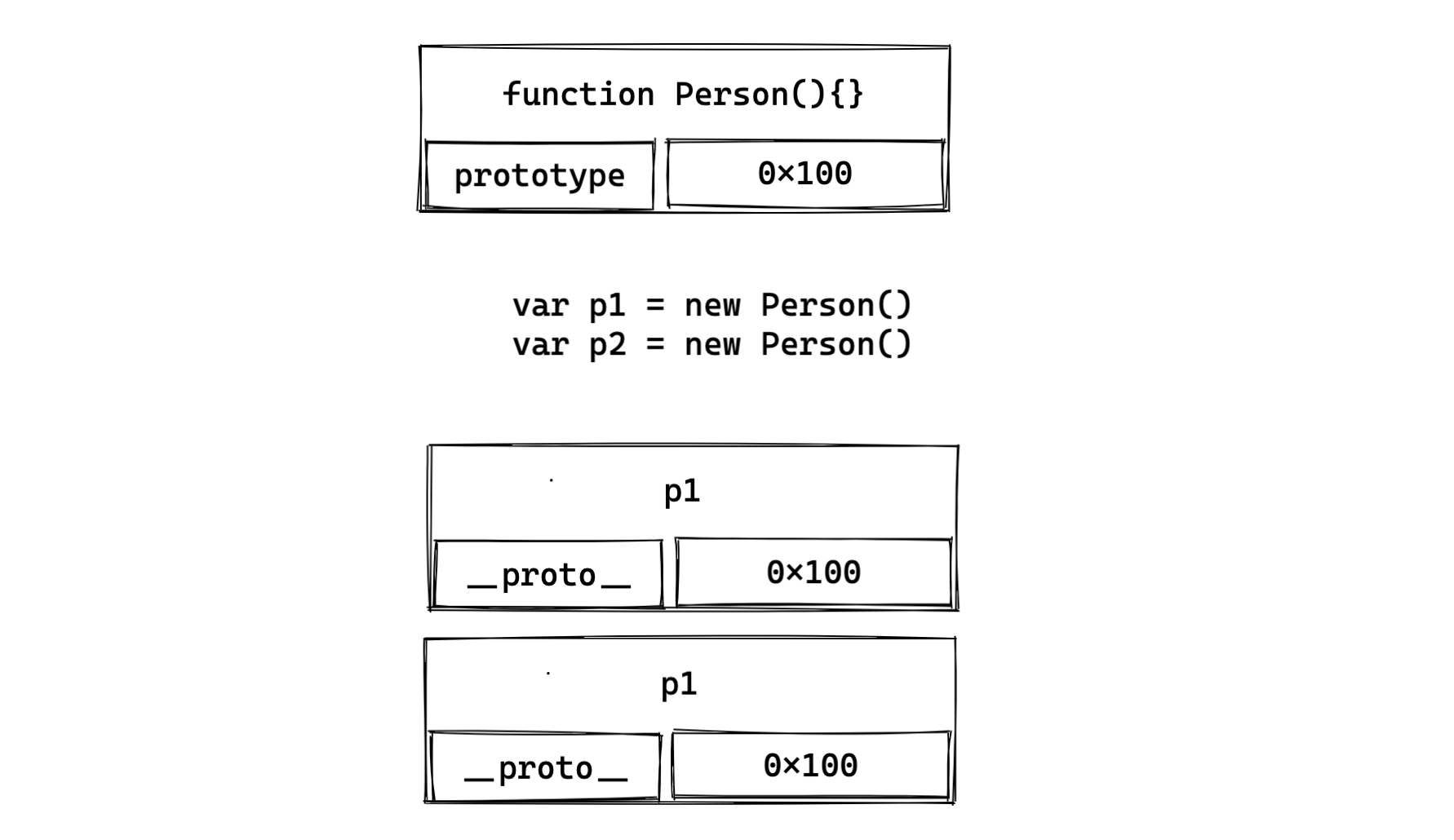物件和原型
JavaSciprt 中的物件被設計成一組屬性的無序集合,類似一個哈希表,由 key 和 value 組成。
Key 是一個標識符名稱,value 可以是任意類型,也可以是物件或者函數類型
如果值是一個函數通常稱之為方法
如何創建物件
透過 new 關鍵字:
var obj = new Object()
obj.name = 'Louis'
obj.age = 19透過字面量的方式:
var obj = {
name: 'Louis',
age: 19
}如何操作物件
基本的操作方式如下:
var obj = {
name: 'Louis',
age: 26
}
// 獲取
obj.name
// 賦值
obj.name = 'XXX'
// 刪除
delete obj.name物件本身的方法
除了直接操作外,物件本身也提供了一些方法調用,以下對常見的方法進行介紹:
Object.defineProperty
使用 Object.defineProperty 對物件屬性進行更加精確的操作,Object.defineProperty 允許傳入三個參數:
- obj: 要定義屬性的物件。
- prop:要被定義或修改的屬性名字。
- descriptor:要定義或修改物件敘述內容。
descriptor 為物件的屬性描述器,屬性描述器(Property descriptor)主要有兩種:資料描述器(data descriptor)與訪問描述器(accessor descriptor),共有以下幾個屬性:
configurable
true則此屬性將可改變或刪除。 預設為falseenumerable
true如果物件被列舉,將會列舉此屬性。 預設為false
一個資料描述器有以下屬性:
一個訪問描述器有以下屬性:
一個簡單的資料描述器使用案例:
var obj = {
name: 'Louis',
age: 26
}
Object.defineProperty(obj, 'height', {
configurable: true,
enumerable: true,
writable: true,
value: 1.75
})
console.log(obj.height)一個簡單的訪問描述器使用案例:
var obj = {
name: 'Louis',
age: 26,
_height: 1.75
}
Object.defineProperty(obj, 'height', {
configurable: true,
enumerable: true,
get: function () {
return this._height
},
set: function (value) {
this._height = value
}
})
console.log(obj.height)訪問描述器也可直接在物件中進行定義:
var obj = {
name: 'Louis',
age: 26,
_height: 1.75,
get height() {
return this._height
},
set height(value) {
this._height = value
}
}Object.defineProperties
透過 Object.defineProperties 可以一次定義多個屬性:
var obj = {
_age: 19
}
Object.defineProperties(obj, {
name: {
configurable: true,
enumerable: true,
writable: true,
value: 'Louis'
},
age: {
configurable: false,
enumerable: false,
get: function () {
return this._age
},
set: function (value) {
this._age = value
}
}
})其他的方法
- Object.getOwnPropertyDescriptor:獲取某一個特定屬性的屬性描述器。
- Object.getOwnPropertyDescriptor :獲取整個物件所有屬性的屬性描述器。
- Object.preventExtensions:禁止物件添加新的屬性。
- Object.seal:禁止對物件配置或刪除屬性。
- Object.freeze: 禁止對物件中屬性的值進行修改
創建物件的方案
字面量
使用字面量直接定義物件是最直接的方式:
var p1 = {
name: '張三',
age: 18,
height: 1.88,
address: '台北',
eating: function () {
console.log(this.name + '在吃東西')
},
running: function () {
console.log(this.name + '在跑步')
}
}工廠函數
透過定義一個創建函數可以在創建大量相似物件的同時,重複利用相當程度的程式碼:
function createPerson(name, age, height, address) {
var p = {
name,
age,
height,
address,
eating: function () {
console.log(this.name + '在吃東西')
},
running: function () {
console.log(this.name + '在跑步')
}
}
return p
}
var p1 = createPerson('張三', 18, 1.88, '台北')
var p2 = createPerson('李四', 18, 1.88, '新竹')
var p3 = createPerson('王五', 18, 1.88, '桃園')以上透過 createPerson 返回的物件仍然是以字面量的形式存在,相對來說使用構造函數去定義物件是一個更好的方法。
構造函數
透過 new 操作符去調用函數時該函數就稱之為構造函數,構造函數能讓物件的類型獲得更加嚴格的約束。
如果一個函數使用 new 操作符去調用,那會執行以下操作:
- 創建一個空的物件( 即 {} );
- 為新創建的物件添加
__proto__,同時該屬性會對函數的 prototype 進行引用; - 構造函數的內部的 this 會指向新創建的物件;
- 如果該函數沒有返回值,則返回 this。
通常構造函數開頭首字母會特意命名為大寫以和普通函數做區分:
function Person(name, age, height, address) {
this.name = name
this.age = age
this.height = height
this.address = address
;(this.eating = function () {
console.log(this.name + '在吃東西')
}),
(this.running = function () {
console.log(this.name + '在跑步')
})
}
var p1 = new Person('Louis', 25, 1.75, '新北市')
var p2 = new Person('Jenny', 20, 1.7, '台北市')不過仍然有缺點,就是在每次 new 創建新的物件時,物件是完全新建的,類似於 eating 或是 running 等函數其實沒必要創建新的佔據更多的內存空間,這時候就可以利用函數的 prototype。
原型( Prototype )
每個物件中都存在一個 prototype 屬性,這個屬性稱之為物件的原型( 隱式原型 )。
可以使用 __proto__ 屬性或是 ES5 提供的 Object.getPrototypeOf 方法查看。
在 JavaScript 中函數也是物件,不過相對於一般的物件來說,函數會多出一個 prototype 屬性 ( 顯示原型 ) 。
函數的 prototype 中也存在一個屬性 constructor,constructor 是重新指回構造函數本身的,意即兩者之間互相循環引用。
如果執行這一段程式碼:
function foo() {}
// 函數有隱式原型
console.log(foo.__proto__)
// 函數也有顯示原型
console.log(foo.prototype)
var f1 = new foo()
var f2 = new foo()
// 以下皆相等
console.log(f1.__proto__ === foo.prototype)
console.log(f2.__proto__ === foo.prototype.constructor)打印出來的會是兩個 true ,也就是 new 出來的物件內部的 __proto__其實都是指向相同一塊記憶體位址,如下圖:

也就是如果無論在物件的__proto__或是函數上的 prototype 上進行修改都能對所有 new 出來的物件進行修改:
f1.__proto__.name = 'Louis'
// 輸出 Louis
console.log(f1.name)
console.log(f2.name)意即:
foo.__proto__.name = 'Louis'
// 輸出 Louis
console.log(f1.name)
console.log(f2.name)也可以進行整個物件替換,不過要補上 constructor 對構造函數的指向:
foo.prototype = {
name: 'Louis'
}
// 可以通過 Object.defineProperty 方式添加 constructor
Object.defineProperty(foo.prototype, 'constructor', {
enumerable: false,
configurable: true,
writable: true,
value: foo
})所以可以對構造函數創建物件的方式使用原型進行優化:
function Person(name, age, height, address) {
this.name = name
this.age = age
this.height = height
this.address = address
}
Person.prototype.eating = function () {
console.log(this.name + '在吃東西')
}
Person.prototype.running = function () {
console.log(this.name + '在跑步')
}
var p1 = new Person('Louis', 25, 1.75, '新北市')
var p2 = new Person('Jenny', 20, 1.7, '台北市')